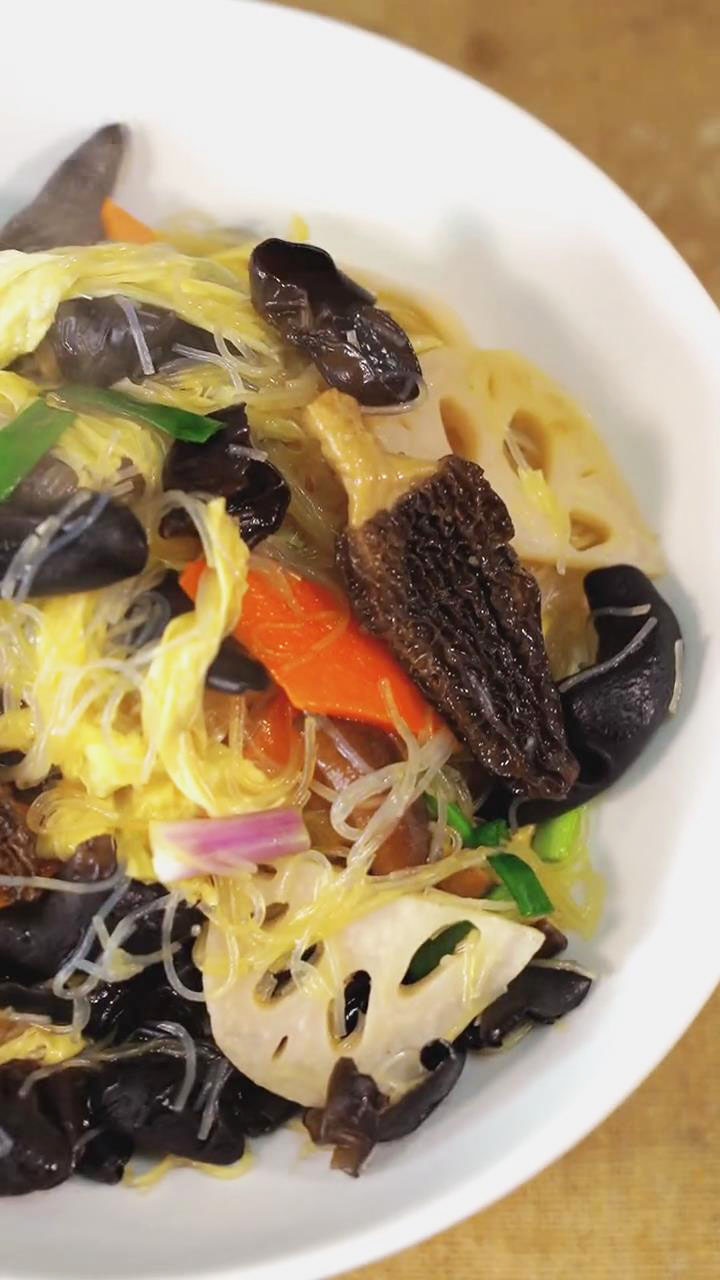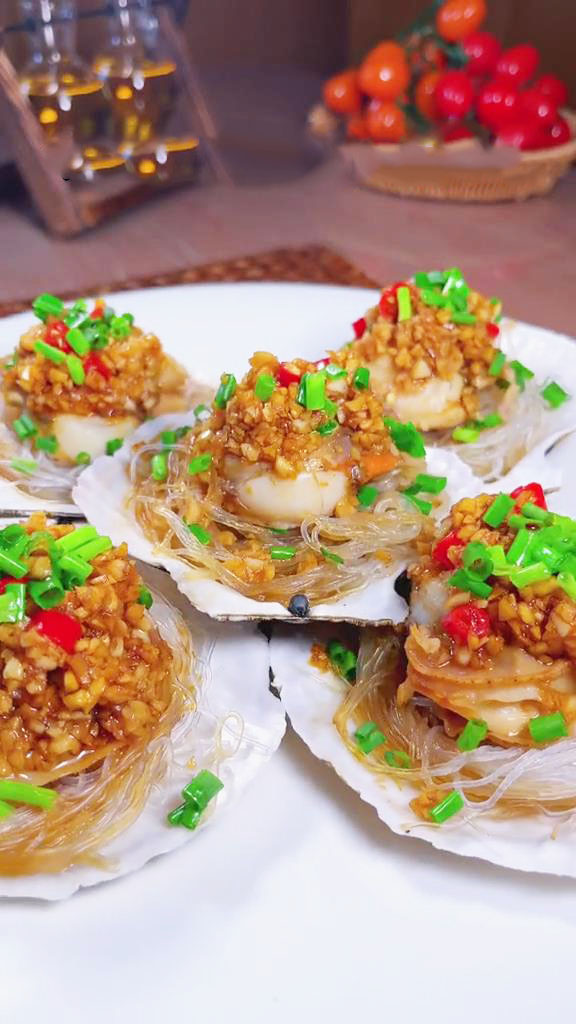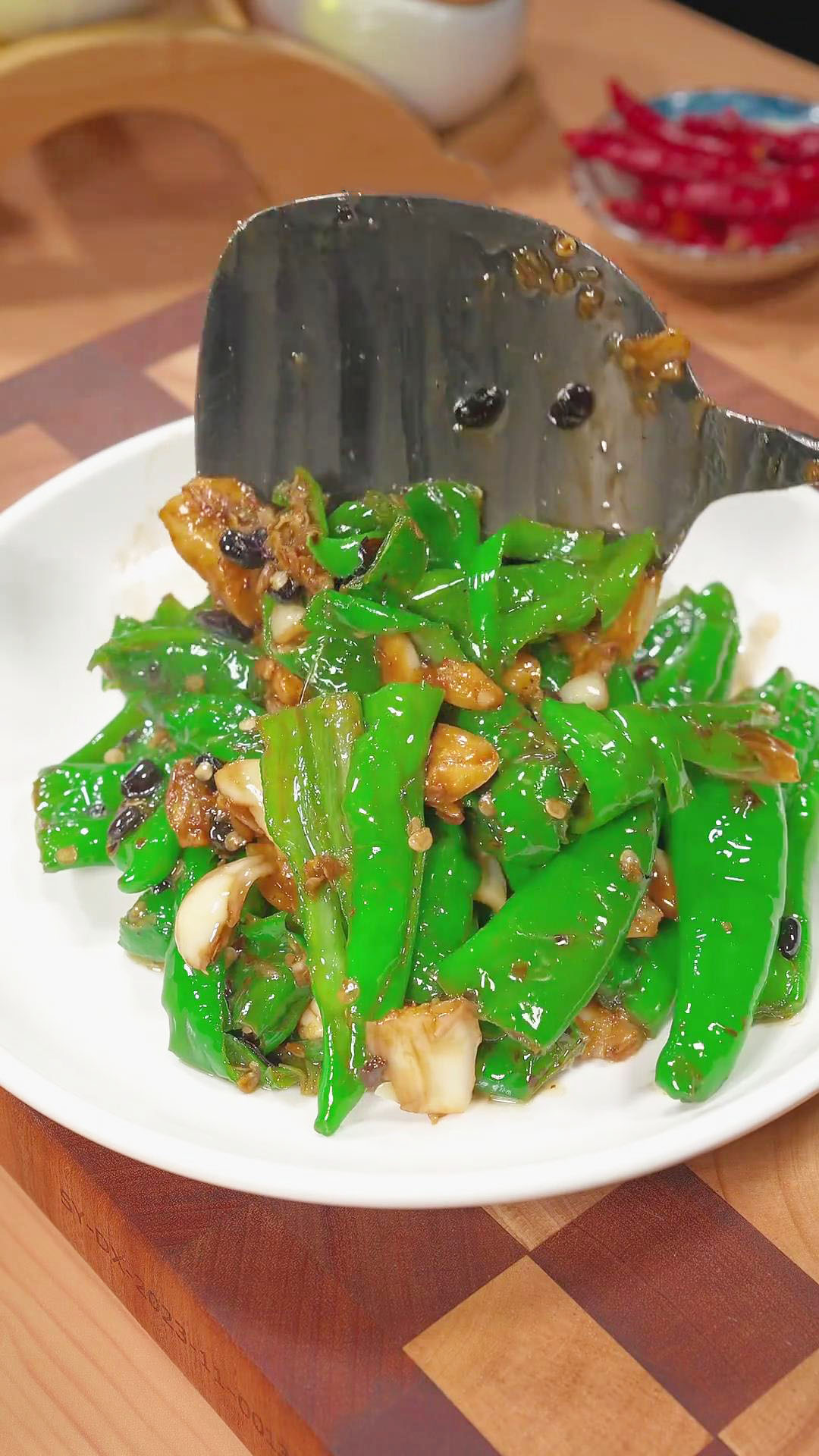Enjoy a hearty nutritious meal with Buddha’s delight (罗汉斋). This dish is loaded with different kinds of vegetables, giving you a variety of flavors and textures. It is the ultimate bowl of goodness without the meat, perfect for those looking for a vegetarian, vegan, or meat-free meal.
What To Know About Buddha’s Delight (罗汉斋)
Buddha’s delight is also referred to as lo han jai, lo hon jai, and Luóhàn cài. It is a popular dish in Chinese cuisine that is traditionally served on the first day of the Chinese New Year. Some people like it because they believe it brings good luck, while others simply enjoy its benefits for digestion, especially after indulging in different kinds of food on New Year’s Eve.

Why is it called Buddha’s Delight anyway? This dish originates back to vegetarian Buddhist monks who practice eating this dish as part of self-purification. For your information, most Buddhists avoid meat and strong-smelling plants such as garlic, leeks, and shallots, to name a few.
Thus, Buddhist delight is an all-vegetable dish that has become a popular vegetarian option in Chinese restaurants. This dish is typically made with 10 or more ingredients. With the many types of vegetables available, you can expect several creative versions of this dish.
List Of Ingredients For Buddha’s Delight
So, which vegetables are commonly used for Buddha’s delight? No matter where you eat it, it will always be something new since you never know what ingredients you will get each time. Each restaurant and household around the world will have its own take on this dish.
There is no specific vegetable for this dish, but there is a commonly used main ingredient. I listed below some of the most frequently used vegetables for Buddha’s delight, as well as the least used ingredients and best seasonings.
Most Frequently Used Ingredients
- Arrowhead
- Bamboo Fungus
- Bamboo Shoots
- Bean Thread Noodles
- Black Mushroom
- Carrot
- Dried Bean Curd Sticks
- Fat Choy
- Fried Tofu
- Ginkgo Nuts
- Lily Buds
- Lotus Seeds
- Napa Cabbage
- Peanuts
- Shiitake Mushroom
- Snow Peas
- Taro Root
- Water Chestnut
- Wheat Gluten (Miàn Jīn)
- Wood Ear
Least Used Ingredients
- Baby Corn
- Bean Sprouts
- Cauliflower
- Fern Tips
- Jujubes or Red Dates
- Laminaria
- Leaf Celery or Chinese Celery
- Lotus Root
- Mushrooms – Straw, Cloud Ear, and Oyster
- Pak Choi
Best Seasonings
- Dark Soy Sauce
- Fermented Bean Curd
- Ginger
- Monosodium Glutamate
- Salt
- Soy Sauce
- Starch
- Sugar
- Vegetable Oil (Peanut and Sesame Oil)
- Vegetarian Oyster Sauce or Oyster Mushroom Sauce
How To Serve Buddha’s Delight
Vegetables always go with most dishes. Moreover, the seasonings for this dish are simple and go well with most flavors. You can serve this as a side dish for your entrée or as part of the main meal.
If you are going to make this a main dish, I suggest adding some protein to make you feel full longer. You can add some tofu, seitan, nuts, or green peas. Then, don’t forget to pair it with steamed rice or top it with chili oil.
Stir-Fry Cooking Tips For Buddha’s Delight
In my recipe, I blanched all the vegetables first before adding them to the pan for stir-frying. However, you can always go straight to stir-frying. One thing you don’t want is a soggy dish of vegetables, which is a common outcome if you do not stir-fry them correctly.
If you want the best stir-fried vegetables, follow my tips and suggestions below. I listed some of my best-kept secrets when it comes to stir-frying. Read these tips first before starting with the recipe steps.
- Cook hard vegetables first: If you decide to stir-fry and skip the blanching part of my recipe, you should cook the hard vegetables first. Avoid overcooking other soft vegetables by stir-frying the hard vegetables first in the pan. Hard vegetables such as carrots take longer to soften. Once the hard vegetables soften a bit, you can add the soft vegetables. In this way, the hard and soft vegetables cook at the same time without the others getting overcooked and soggy.
- Avoid soggy vegetables: I suggest cooking first vegetables that are moist and need to release moisture such as mushrooms. It should be cooked long enough to allow the water to evaporate. Moreover, make sure the veggies are patted dry before stir-frying. Otherwise, the moisture will be released in the pan, making the vegetables more soggy. Other factors that can make the vegetables soggy are when you overcrowd the pan or cover the pan. These two scenarios create steam, which adds moisture to the vegetables.
- Cook on high heat: Cooking on high heat will dry up the dish and evaporate any moisture released. This is crucial in avoiding soggy vegetables. Moreover, it is ideal to use a wok or pan that is excellent at retaining heat.
- Cut the vegetables appropriately: I highly suggest cutting the vegetables in consistent sizes so they all cook in the same amount of time. If the vegetables are uneven, you risk overcooking or undercooking some of them. You may also want to consider the thickness of each. The thicker the pieces, the longer it cooks. On the other hand, the thinner the pieces, the shorter it cooks. Moreover, I also recommend that you cut hard vegetables into smaller pieces to cook them faster if you plan to cook them together with other soft vegetables.
Prepare These Kitchenware & Ingredient
This dish does not require complicated kitchenware as you only need a cooking pot for blanching and a pan for stir-frying. However, you may want to prepare the special vegetables in advance as these may not be a common grocery store item. These are what you need for the recipe:
Kitchenware
- Cooking pot for blanching
- Pan for stir-frying
- Spatula
- Strainer
Ingredients
Vegetables
Adjust the quantity according to your desired amount.
- Soaked wood ear
- Lotus root
- Morchella
- Shiitake mushroom
- Carrots
- Soaked bean curd sticks
- Soaked mung bean noodles
Seasonings
Adjust the seasonings to taste or according to the amount of vegetables.
- 2 tsp cooking oil
- 3 sliced ginger
- 1 tsp vegetarian oyster sauce or oyster mushroom sauce
- 2 tsp light soy sauce
- 1/2 tsp salt
- 1/2 tsp sugar
- 1/2 tsp vegetable or chicken bouillon powder
- Cornstarch slurry (1 tbsp of cornstarch with 2 tbsp of water)
- Chopped green onions
How To Make My Buddha’s Delight Recipe
This recipe has been a favorite of mine because it is super easy to make. You simply need to prepare the vegetables by blanching and then stir-fry all with seasonings. And voila! You have a nutritious and flavorful Buddha’s delight. Watch my tutorial video for this recipe on Instagram and Tiktok.
Prepare All The Vegetables
Soak in water the wood ear, bean curd sticks, shiitake mushroom, and mung bean noodles. These should be soaked until fully rehydrated.
After soaking, rinse the soaked vegetables thoroughly to remove dirt.
Then, prepare a pot with water and bring to a slight boil.
In the pot, add the soaked wood ear, lotus root, morchella, shiitake mushroom, carrots, soaked bean curd sticks, and soaked mung bean noodles.
Give it a good stir and blanch the vegetables for 30 seconds. Blanching cooks the vegetables just slightly to still have a nice crisp and fresh flavor for stir-frying.
Remove the vegetables and drain thoroughly with a strainer. Make sure the vegetables are dry before stir-frying.
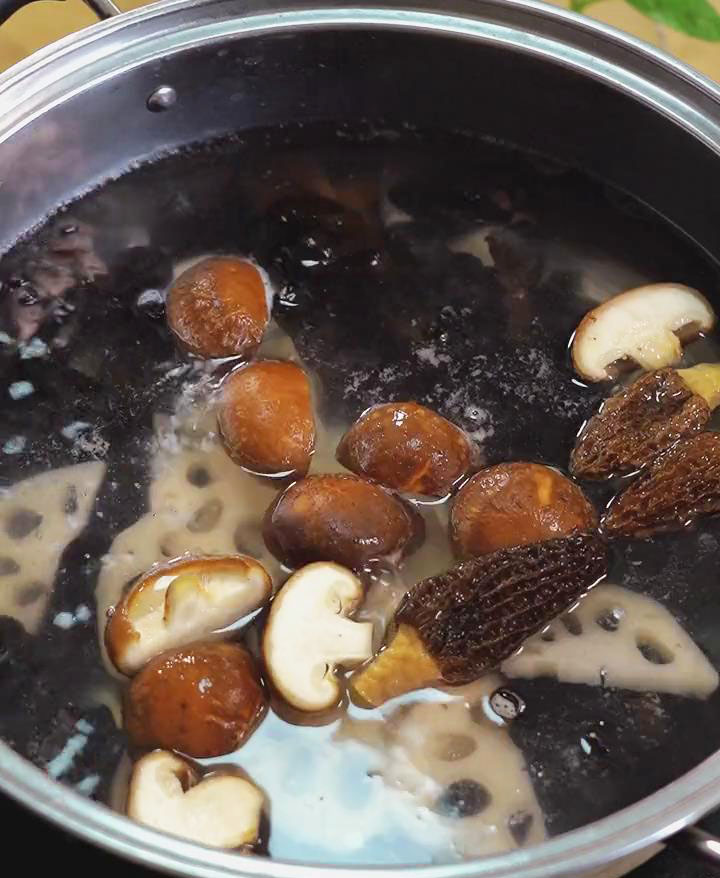
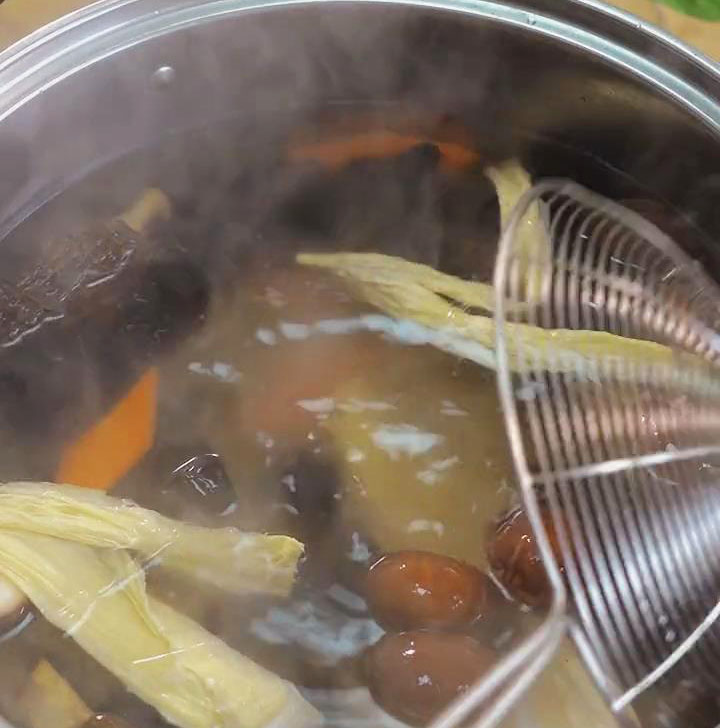
Stir-Fry The Vegetables
Prepare a pan with cooking oil and heat up.
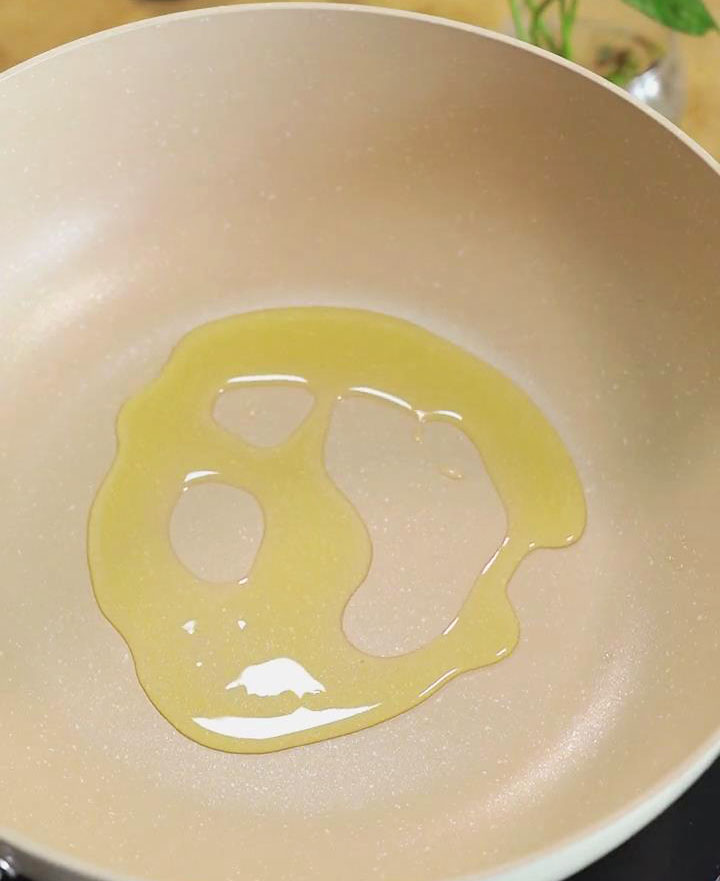
Once the oil is hot, add the slices of ginger.

Then, add all the vegetables on high heat. High heat helps evaporate excess moisture.
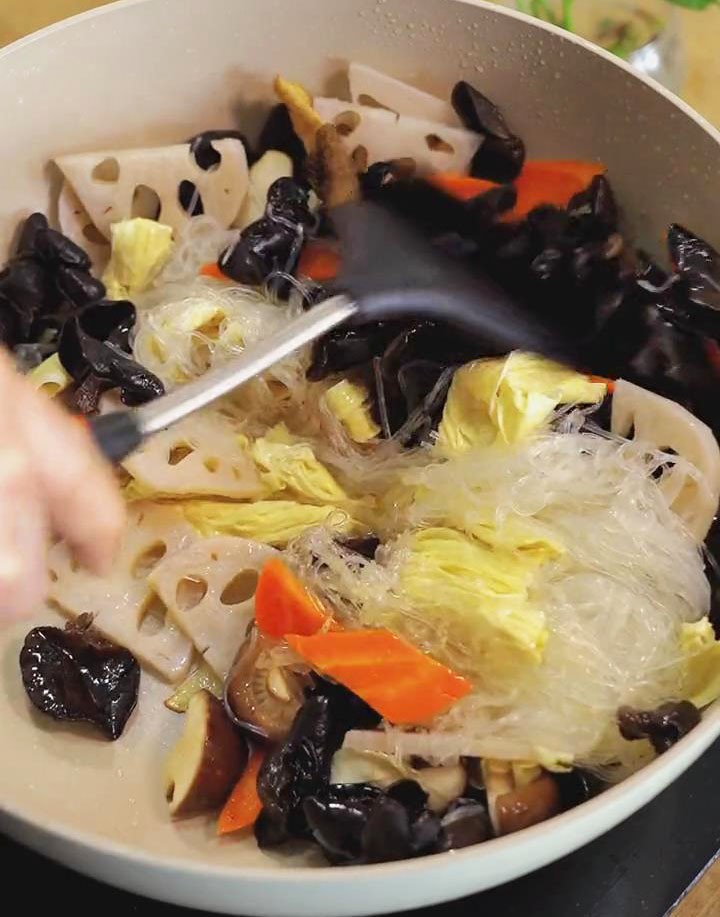
Stir-fry the vegetables until tender.
Next, season with oyster sauce, light soy sauce, salt, sugar, and vegetable or chicken bouillon powder.
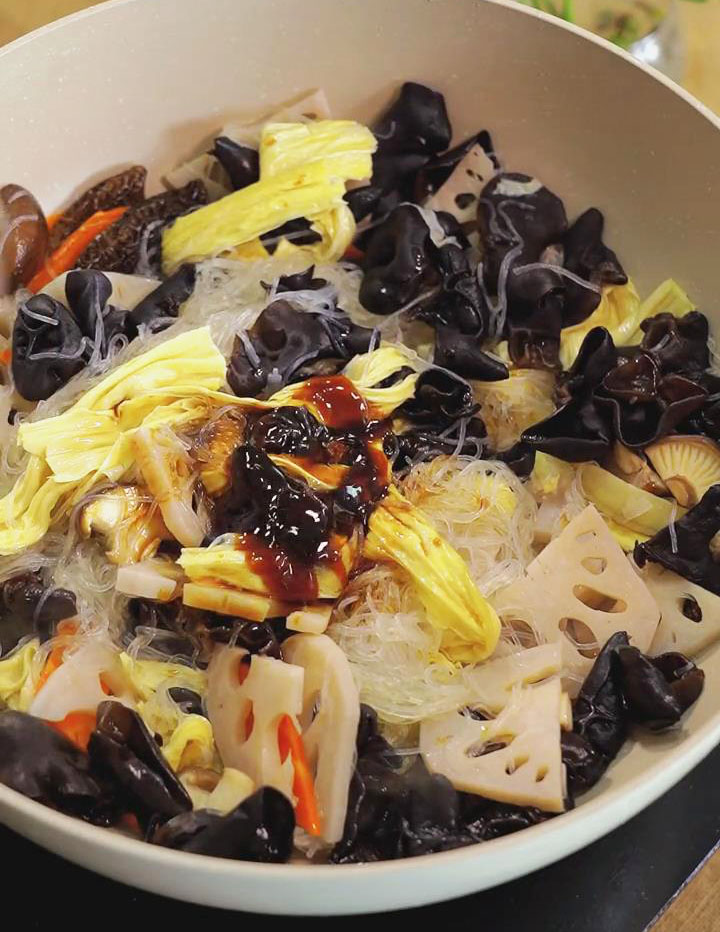
Mix the seasonings well and pour the cornstarch slurry.
Lastly, add the chopped green onions.
Stir well and serve with steamed plain or fried rice.
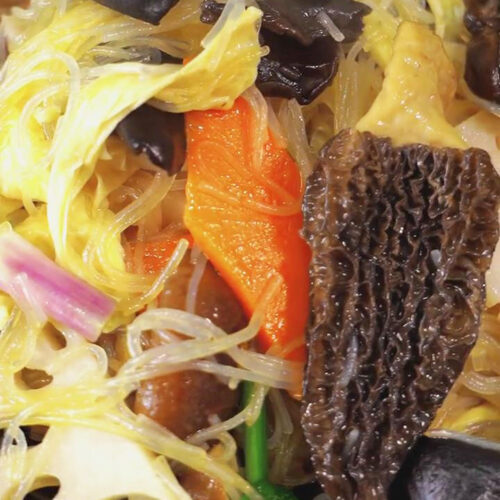
Veggie-Packed Buddha's Delight (Lo Han Jai)
Ingredients
Vegetables (Adjust the quantity according to your desired amount.)
- Soaked wood ear
- Lotus root
- Morchella
- Shiitake mushroom
- Carrots
- Soaked bean curd sticks
- Soaked mung bean noodles
Seasonings
- Adjust the seasonings to taste or according to the amount of vegetables.
- 2 tsp cooking oil
- 3 sliced ginger
- 1 tsp vegetarian oyster sauce or oyster mushroom sauce
- 2 tsp light soy sauce
- 1/2 tsp salt
- 1/2 tsp sugar
- 1/2 tsp vegetable or chicken bouillon powder
- Cornstarch slurry 1 tbsp of cornstarch with 2 tbsp of water
- Chopped green onions
Instructions
Prepare All The Vegetables
- Soak in water the wood ear, bean curd sticks, shiitake mushroom, and mung bean noodles. These should be soaked until fully rehydrated.
- After soaking, rinse the soaked vegetables thoroughly to remove dirt.
- Then, prepare a pot with water and bring to a slight boil.
- In the pot, add the soaked wood ear, lotus root, morchella, shiitake mushroom, carrots, soaked bean curd sticks, and soaked mung bean noodles.
- Give it a good stir and blanch the vegetables for 30 seconds. Blanching cooks the vegetables just slightly to still have a nice crisp and fresh flavor for stir-frying.
- Remove the vegetables and drain thoroughly with a strainer. Make sure the vegetables are dry before stir-frying.
Stir-Fry The Vegetables
- Prepare a pan with cooking oil and heat up.
- Once the oil is hot, add the slices of ginger.
- Then, add all the vegetables on high heat. High heat helps evaporate excess moisture.
- Stir-fry the vegetables until tender.
- Next, season with oyster sauce, light soy sauce, salt, sugar, and vegetable or chicken bouillon powder.
- Mix the seasonings well and pour the cornstarch slurry.
- Lastly, add the chopped green onions.
- Stir well and serve with steamed plain or fried rice.

